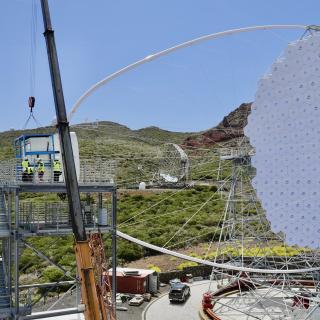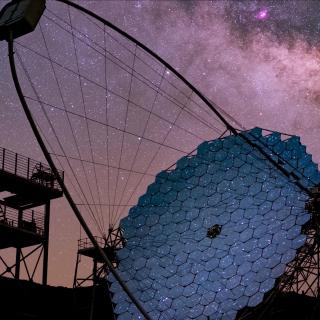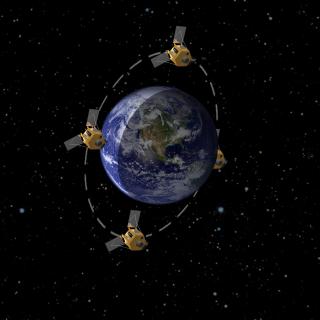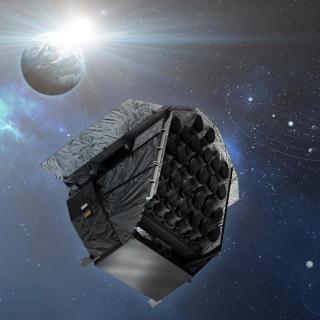The international CTAO LST Collaboration, in which the Instituto de Astrofísica de Canarias (IAC) plays a prominent role, released remarkable findings from observations of GRB 221009A—the brightest gamma-ray burst (GRB) ever recorded. The results were published by the renowned journal The Astrophysical Journal Letters (ApJ Letters). The publication presents in-depth observations conducted in 2022 with the Large-Sized Telescope (LST) prototype, the LST-1, during its commissioning phase at the Roque de los Muchachos Observatory (ORM) on the CTAO-North site in La Palma, Spain. The observations revealed a hint of an excess in the gamma-ray flux, which help provide new insights into the enigmatic and complex nature of GRBs at very high energies. The results support theoretical models in which these bursts generate structured, multi-layered jets where particles are accelerated.
GRBs are among the Universe’s most powerful phenomena, releasing in just seconds as much energy as the Sun emits over its entire lifetime. As their name suggests, they burst over a brief, prompt phase, lasting seconds to minutes, and then are followed by an afterglow that can fade over hours to months. GRBs are classified as short or long based on the duration of the burst: long GRBs are thought to be linked to exceptionally bright supernovae, while short GRBs likely result from neutron star collisions. Despite their intense brightness, these extragalactic sources are challenging to detect at the highest energies because the gamma rays they emit weaken over the vast distances they travel, as well as due to their transient nature.
On 9 October 2022, space-based observatories, such as NASA’s Fermi and Swift satellites, detected an extremely bright long GRB, named GRB 221009A. "Dubbed the 'BOAT' (Brightest Of All Time), the burst was so intense that it saturated multiple instruments observing it, and triggered follow-up observations across the globe," explains Alicia López Oramas, researcher at the IAC and Publications Manager of LST Collaboration. ”BOAT is a unique event: it is estimated that there will be one GRB per millennium with this intensity," she adds.
The LST-1 telescope, located at the CTAO’s northern array site in La Palma (Canary Islands, Spain), began observing the event just 1.33 days after the initial explosion. Spanning over 20 days after the GRB onset, the observations with the LST-1 enabled the LST Collaboration to identify an excess of gamma rays. "While this excess did not reach the threshold required in the field to claim a formal detection, it allowed the team to establish very constrained upper limits on the very high-energy gamma-ray flux emitted by the source. Thus, these results mark an important step toward disentangling between competing theoretical models," says Ramón García López, principal investigator (PI) of the CTAO group at the IAC.
GRBs are believed to involve ultra-fast jets of plasma ejected either from a black hole, remanent of long GRBs, or from the merging of neutron stars, in short GRBs. However, the exact process behind jet formation remains a major mystery. The LST-1 data support the theory that GRB 221009A was powered by a complex, structured jet: a narrow, ultra-fast core surrounded by a wider, slower-moving sheath of material. This challenges the simpler “top-hat” jet commonly used in earlier studies and offers new insights into jet formation mechanisms and the nature of the central engine.
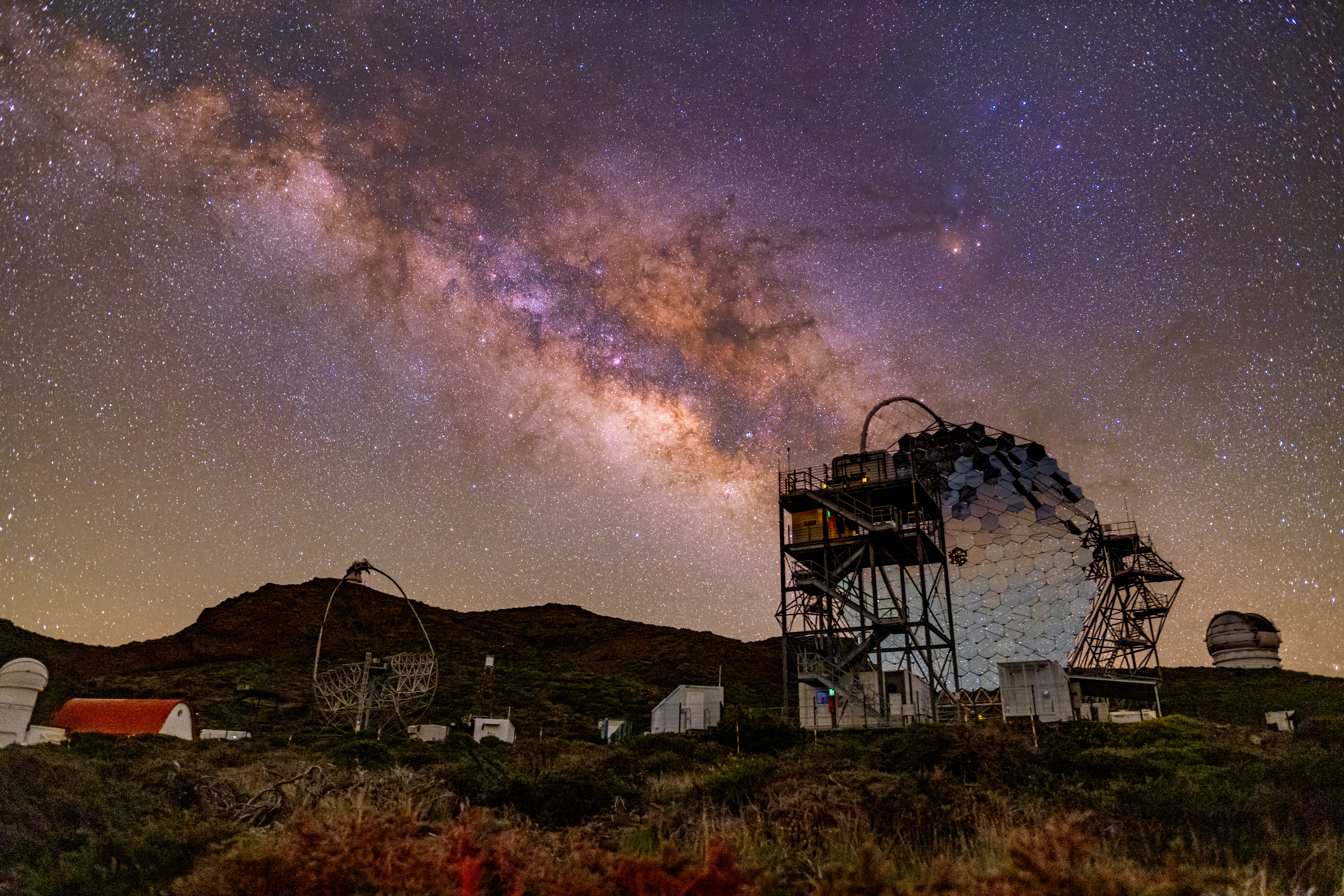
"Notably, the recorded data include observations made under very bright moonlight conditions, which poses a significant challenge for Cherenkov telescopes due to their sensitive cameras," points out Juan Cortina, researcher at the IAC/CIEMAT and Chair of LST Steering Committee. The full moon in the hours following the burst prevented rapid follow-up by other Cherenkov telescopes, but the technical solutions developed by the LST Collaboration made it possible for the LST-1 to be the first one to observe the source in the very high-energy gamma-ray regime. "This marks the first time that the LST-1 has collected data under such challenging conditions, opening new possibilities for observing transient cosmic phenomena even during very bright moon nights," adds Cortina.
These results demonstrate the power of the CTAO’s next-generation telescopes to explore the very high-energy Universe, ushering in a new era where researchers can probe the inner workings of cosmic sources in unprecedented detail. As the CTAO continues to expand—three more LSTs are under development by the LST Collaboration on the same site and construction is beginning on the CTAO-South site in Chile—intermediate configuration arrays will soon be operational in both hemispheres. With an unprecedented sensitivity, these subsets of telescopes will already enhance our ability to study GRBs and other extreme phenomena. Complementarily, the successful deployment of alert handlers is allowing automatic responses, further reducing the follow-up reaction times for transient events.
The CTAO LST Collaboration is an In-Kind Contributor (IKC) for the CTAO, in charge of building the Large-Sized Telescopes (LSTs). The collaboration is made up of more than 400 scientists and engineers from 67 different institutes across 11 countries: Brazil, Bulgaria, Croatia, Czech Republic, France, Germany, Italy, Japan, Poland, Spain and Switzerland.
| The IAC's actions under the project "The Four Large Size Telescopes (LST) of CTA-North at the ORM," reference ESFRI-2017-01-IAC-12, are funded by the Ministry of Science, Innovation and Universities (MICIU), co-financed by 85% with European Regional Development Funds (FEDER). These actions also receive funding from the Government of the Canary Islands, through the Canary Agency for Research, Innovation and the Information Society (ACIISI), which is part of the Ministry of Universities, Science, Innovation and Culture. |
Artículo: K. Abe, S. Abe, A. Abhishek et al. (the CTAO-LST Collaboration): "GRB 221009A: Observations with LST-1 of CTAO and implications for structured jets in long gamma-ray bursts". Astrophysical Journal Letters, 2025. DOI: https://doi.org/10.3847/2041-8213/ade4cf
Contacto en el IAC:
Ramón García López, ramon.garcia.lopez [at] iac.es (ramon[dot]garcia[dot]lopez[at]iac[dot]es)
Alicia López Oramas, alicia.lopez [at] iac.es (alicia[dot]lopez[at]iac[dot]es)
Juan Cortina, juan.cortina-ext [at] iac.es (juan[dot]cortina-ext[at]iac[dot]es)


